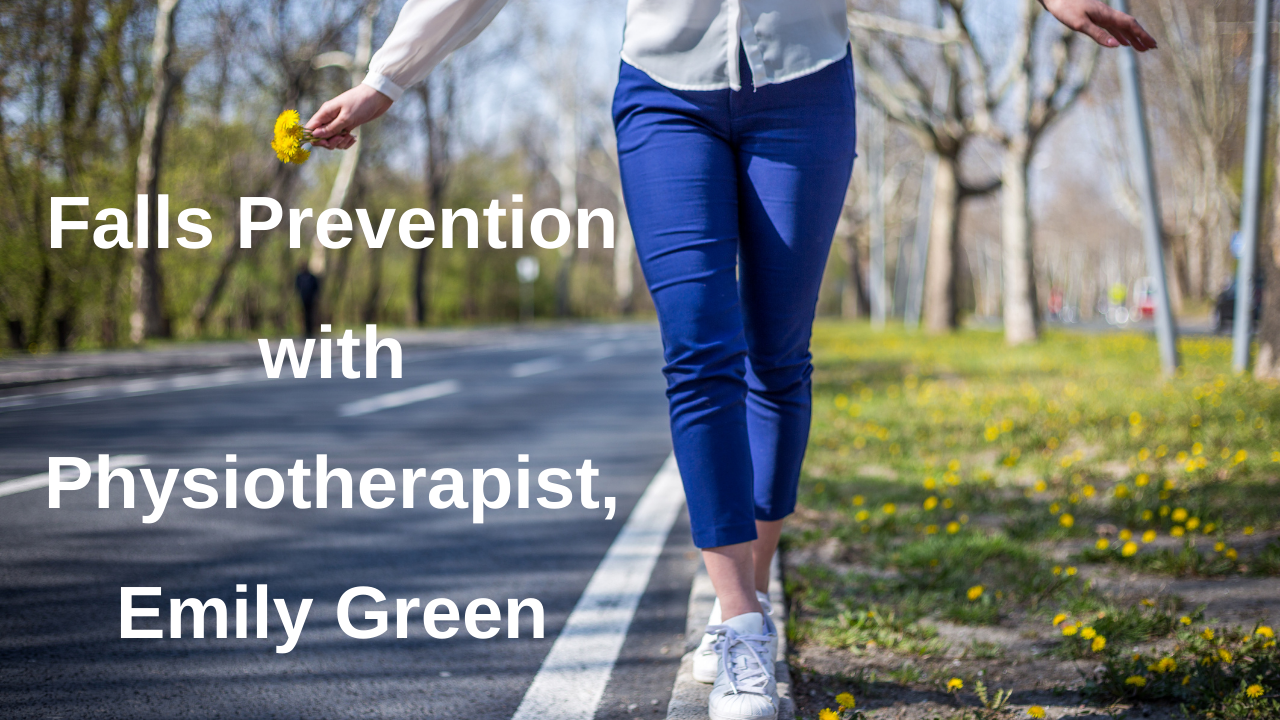
20 Aug Falls Prevention with Physiotherapist, Emily Green
The Australian Physiotherapy Association recently hosted it’s annual Winter Breakfast with keynote speaker Professor Cathy Said presenting the latest evidence on falls prevention.
Falls are a major public health concern in Australia, particularly among older adults. Approximately 30% of people aged 65 and over experience at least one fall each year, with the rate increasing to over 50% for those aged 80 and above. Falls are the leading cause of injury-related hospitalisations among older Australians, far surpassing motor vehicle accidents. In fact, falls account for more hospital admissions and longer stays than any other type of injury for seniors. The financial burden on the healthcare system is substantial, with fall-related injuries costing the Australian hospital system an estimated $3.1 billion annually, highlighting the urgent need for effective fall prevention strategies across the ageing population.
Professor Said presented the 2025 Australian Falls Prevention Guidelines, which outline the important elements to consider when it comes to setting yourself up for success and preventing falls, both now and into the future:
- Older adults should aim for 2–3 hours a week of balance, strength and mobility exercises.
- These should be ongoing, not one-off, and designed or guided by physiotherapists, exercise physiologists, or trained instructors.
- Completing more than three hours per week of balance exercise reduces falls risk by 42%.
-
Assess and Act on Your Risk
- Healthcare providers can assess for specific, modifiable factors—such as balance, medication use, vision, hearing, gait, cognition, and environment—and recommend tailored interventions.
-
Home Safety Reviews
- Anyone who has fallen in the past year or is at increased fall risk (like using a walking aid or having vision problems) should have a home safety assessment by an occupational therapist for practical modifications (e.g. rails, lighting, removing trip hazards).
-
Medication and Health Checks
- Medicines that affect balance or blood pressure (including psychotropic drugs) should be reviewed regularly.
- Vision and hearing should be checked annually to ensure corrective aids are working well and to avoid multifocal lenses while walking. Our senses give us valuable information about our environment- let’s keep them sharp!
-
Other Interventions
- Address continence problems, dizziness/syncope, foot issues (with podiatry support), and ensure proper footwear.
- Vitamin D supplements (daily or weekly) and osteoporosis medication are encouraged if there’s deficiency or a history of bone fractures.
✅ Suggestions for You or a Family Member
- Ask your GP for a falls risk assessment
- Discuss a suitable balance and strength program with your physiotherapist.
- Organise a home safety check with an occupational therapist, especially if risk factors exist.
- Review all medications for potential side effects—particularly those affecting balance or blood pressure.
- Ensure regular vision and hearing checks and choose safe eyewear for walking.
- Discuss Vitamin D supplements or osteoporosis treatment with your doctor, if needed.
By taking action in these areas, you can reduce your risk of falling and feel more secure in your movements.
Understanding Balance
Balance is your body’s way of knowing where it is in space, and it relies on three main systems working together:
- Legs – Your muscles, joints, and ligaments send signals to your brain about your body’s position.
- Eyes – Vision helps you understand where you are in relation to your surroundings and the horizon.
- Inner Ears – The vestibular system in your inner ear acts like a spirit level for your head, helping detect movement and orientation.
As we get older—or after an illness or injury—these systems may not work as well, making it harder to stay steady.
Once your brain notices you are off balance, it needs to react quickly. That reaction depends on both practice and physical strength. You need enough strength in your body to either steady yourself or to take a quick step to prevent a fall.
The good news? Balance can be improved! With the right exercises and guidance, your legs can become stronger and your balance more reliable.
Your physiotherapist will create a personalized program to:
- Strengthen your core and lower body muscles
- Improve posture and coordination
- Help you move more safely and confidently in daily life
It is important to note that the specific interventions and strategies employed by any medical practitioner will depend on the individual’s unique needs. Each practitioner in a care team will work collaboratively with each other to provide comprehensive care and support for the individual.
If there is a part of your condition or injury that you are struggling to understand, be sure to seek clarification with your medical professional. None of the information in this article is a replacement for proper medical advice. Always seek advice from your trusted medical professional regarding your health and/or medical conditions.
